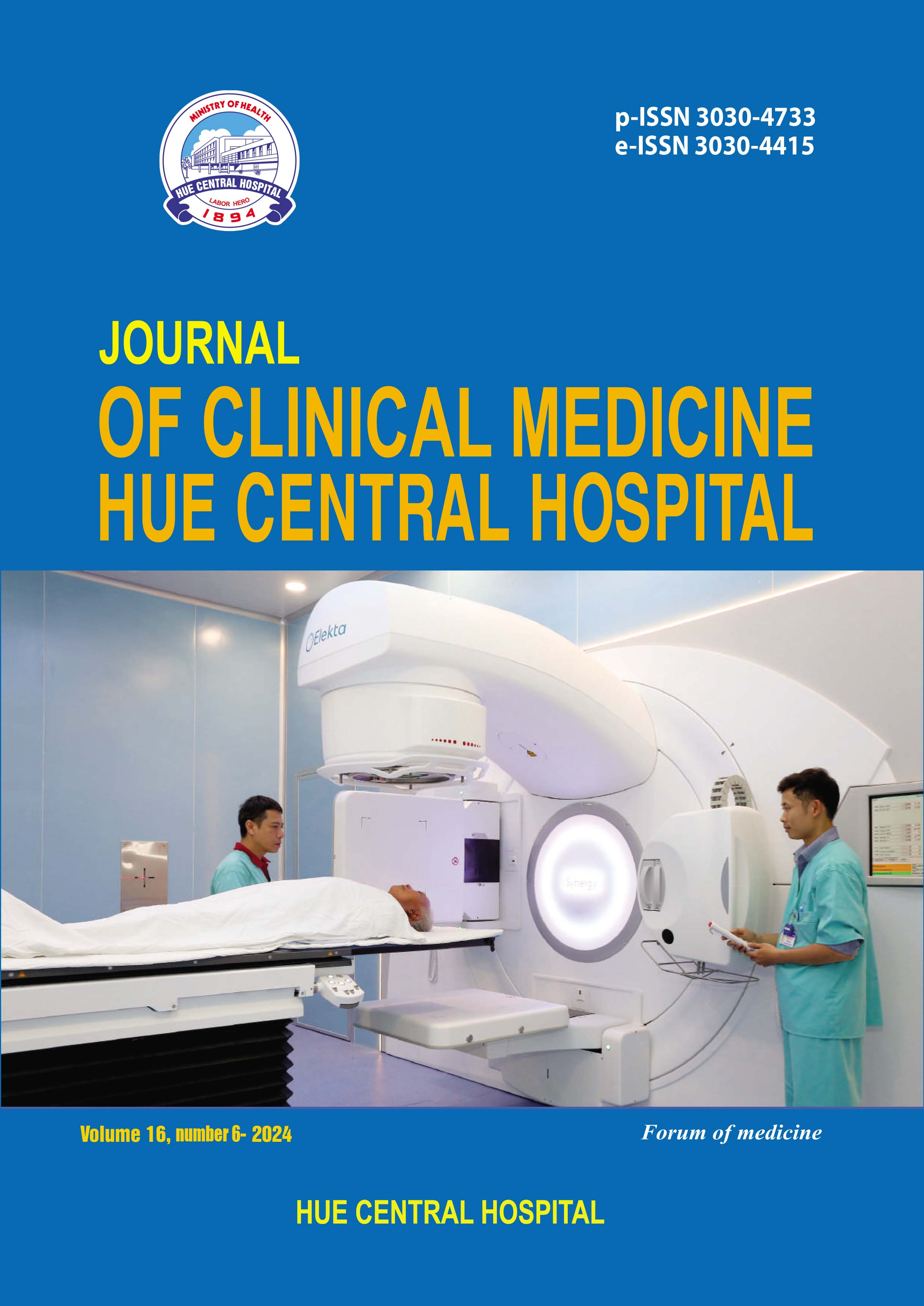Abstract
Background: In treating recurrent bile duct stones, liver resection can clear away stones and remove biliary strictures and atrophic liver parenchyma. Therefore, we conducted a study to evaluate the results of hepatectomy for recurrent bile duct stones.
Method: A descriptive study included 34 patients with recurrent bile duct stones who underwent hepatectomy from January 2019 to June 2022.
Results: The male/female ratio was 2.4/1 with an average age of 53,9±8,8 years. Indications for hepatectomy included 64.7% atrophy or severe fibrosis of the liver segment, 29.4% presence of a liver abscess, and 5.9% suspected cholangiocarcinoma. Left lateral sectionectomy, left hepatectomy and right posterior sectionectomy were 88,2%, 8,8%, and 2,9%, respectively. The mean operative time was 179,8 ± 36,6 min (155 - 210), and the mean intraoperative blood loss was 225,7 ± 98,6 ml (170 - 350). The initial surgical stone clearance rate was 88,2%, and the final stone clearance
rate was 94,1%. The postoperative complications included 14.7% wound infection and 5.9% intraabdominal abscess.
Conclusion: Hepatectomy for treating recurrent bile duct stones is a safe and effective procedure. The proper selection of which patients should undergo liver resection will lead to better outcomes.
Keywords: Bile duct stones, recurrent bile duct stones, liver resection.
References
Sakpal SV, Babel N, Chamberlain RS. Surgical management
of hepatolithiasis. HPB. 2009;11:194-202.
Krige JEJ. Liver Resection for Complicated Hepatolithiasis
Archives of Surgery. 2006;141:713.
Li SQ, Liang LJ, Peng BG, Hua YP, Lv MD, Fu SJ, et al.
Outcomes of liver resection for intrahepatic stones: a
comparative study of unilateral versus bilateral disease.
Annals of surgery. 2012;255:946–53.
Kim J, Cho JY, Han H-S, Yoon Y-S, Choi Y, Lee JS, et al.
Validation of a difficulty scoring system for laparoscopic
liver resection in hepatolithiasis. Surgical Endoscopy.
;35:1148-55.
Tan HL, Koh YX, Lye WK, Lee SY, Goh BKP, Tan SS, et
al. Surgical management decreases disease recurrence risk
in recurrent pyogenic cholangitis. ANZ journal of surgery.
;88:E659-63.
Lorio E, Patel P, Rosenkranz L, Patel S, Sayana H.
Management of Hepatolithiasis: Review of the Literature
Current Gastroenterology Reports. 2020;22:30.
Li H, Zheng J, Cai J-Y, Li S-H, Zhang J-B, Wang X-M, et
al. Laparoscopic VS open hepatectomy for hepatolithiasis:
An updated systematic review and meta-analysis. World
journal of gastroenterology. 2017;23:7791-806.
Li C, Wen T. Surgical management of hepatolithiasis:
A minireview. Intractable & Rare Diseases Research.
;6:102-5.
Tazuma S, Unno M, Igarashi Y, Inui K, Uchiyama K, Kai
M, et al. Evidence-based clinical practice guidelines
for cholelithiasis 2016. Journal of gastroenterology.
;52:276-300.
Suzuki Y, Mori T, Yokoyama M, Kim S, Momose H,
Matsuki R, et al. A proposed severity classification system
for hepatolithiasis based on an analysis of prognostic factors
in a Japanese patient cohort. Journal of gastroenterology.
;53:854-60.
You M su, Lee SH, Kang J, Choi YH, Choi JH, Shin B, et al.
Natural Course and Risk of Cholangiocarcinoma in Patients
with Recurrent Pyogenic Cholangitis: A Retrospective
Cohort Study. Gut and Liver. 2019;13:373-9.
Cheon YK, Cho YD, Moon JH, Lee JS, Shim CS. Evaluation
of long-term results and recurrent factors after operative
and nonoperative treatment for hepatolithiasis. Surgery.
;146:843-53.
Li EL, Yuan RF, Liao WJ, Feng Q, Lei J, Yin XB, et al.
Intrahepatic bile duct exploration lithotomy is a useful
adjunctive hepatectomy method for bilateral primary
hepatolithiasis: an eight-year experience at a single centre.
BMC surgery. 2019;19:16.
Feng X, Zheng S, Xia F, Ma K, Wang S, Bie P, et al.
Classification and management of hepatolithiasis: A highvolume, single-center’s experience. Intractable & rare diseases research. 2012;1:151-6.
Chen D-W, Tung-Ping Poon R, Liu C-L, Fan S-T, Wong
J. Immediate and long-term outcomes of hepatectomy for
hepatolithiasis. Surgery. 2004;135:386-93.
Uenishi T, Hamba H, Takemura S, Oba K, Ogawa M,
Yamamoto T, et al. Outcomes of hepatic resection
for hepatolithiasis. American journal of surgery.
;198:199-202.
Clemente G, De Rose AM, Murri R, Ardito F, Nuzzo G,
Giuliante F. Liver Resection for Primary Intrahepatic
Stones: Focus on Postoperative Infectious Complications.
World Journal of Surgery. 2016;40:433-9.
| Published | 30-12-2024 | |
| Fulltext |
|
|
| Language |
|
|
| Issue | Vol. 16 No. 6 (2024) | |
| Section | Original article | |
| DOI | 10.38103/jcmhch.16.6.4 | |
| Keywords | Từ khóa: Sỏi mật, sỏi mật tái phát, phẫu thuật cắt gan. |

This work is licensed under a Creative Commons Attribution-NonCommercial-NoDerivatives 4.0 International License.
Copyright (c) 2024 Journal of Clinical Medicine Hue Central Hospital

